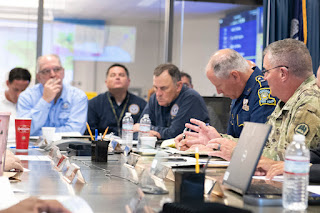“At its most potent, collaboration is joining people you’ve never met, to work a problem you’ve just conceived together, by means you will attempt to collectively discover - and you haven’t told your boss yet.” - John G., Sandia National Laboratory
Morning!
As promised in my previous blog, I wanted to take a moment and talk about the difference between collaboration, cooperation and coordination. Terms that are used interchangeably (unfortunately) by many but in my world, they are quite different. In my previous career it was very common for our team to hear these terms thrown around quite frequently in meetings, briefings, etc. with really no understanding. In fact, when we were invited in to observe and provide recommendations for an organization on how they could enhance their collaboration activities we typically did not see much collaboration being accomplished. What we encountered were individuals and teams that displayed little or no trust, a key ingredient for collaboration. They were simply coordinating their efforts or in a few instances they were cooperating to get things done. Their level of trust? Missing in action. Were they actively involved in collaboration? Not so much.
The definition I prefer for collaboration is displayed at the top of this post, courtesy of John G., Sandia National Laboratories, who developed this over the course of observing multiple organizations and operational environments. Three points that are made in this very unique definition:
- Discovery - Joining people you’ve never met
- Opportunity - To work a problem you’ve just conceived together, by means you will attempt to collectively discover
- Empowerment - And you haven’t told your boss yet
Pretty interesting definition, eh? This definition always created great dialog and discussion when entertaining visitors in the CollabZone.
There are a lot of graphics that have been built that speak to the differences in these terms. The one I favor is this one from The Economist Intelligence Unit 2008. Note the words for collaboration ... "Requires a high-level of trust."
Another graphic I like when discussing collaboration is shown below. I think it is helpful primarily because it overlays Trust and Time along with Turf Wars when looking at the terminology and descriptions. I expect many of you can identify with the simple exchange of information (and nothing more) as it relates to Turf Wars.
You knew this question was coming...
Is your organization really collaborating on a daily basis? Collaboration is a contact sport - how is your emergency operations center doing? What training would be beneficial to them so they can truly move into the realm of collaboration?
Do you know an organization that struggles with this? Please feel free to share this blog post with them.
Humbly,
Collabman



























